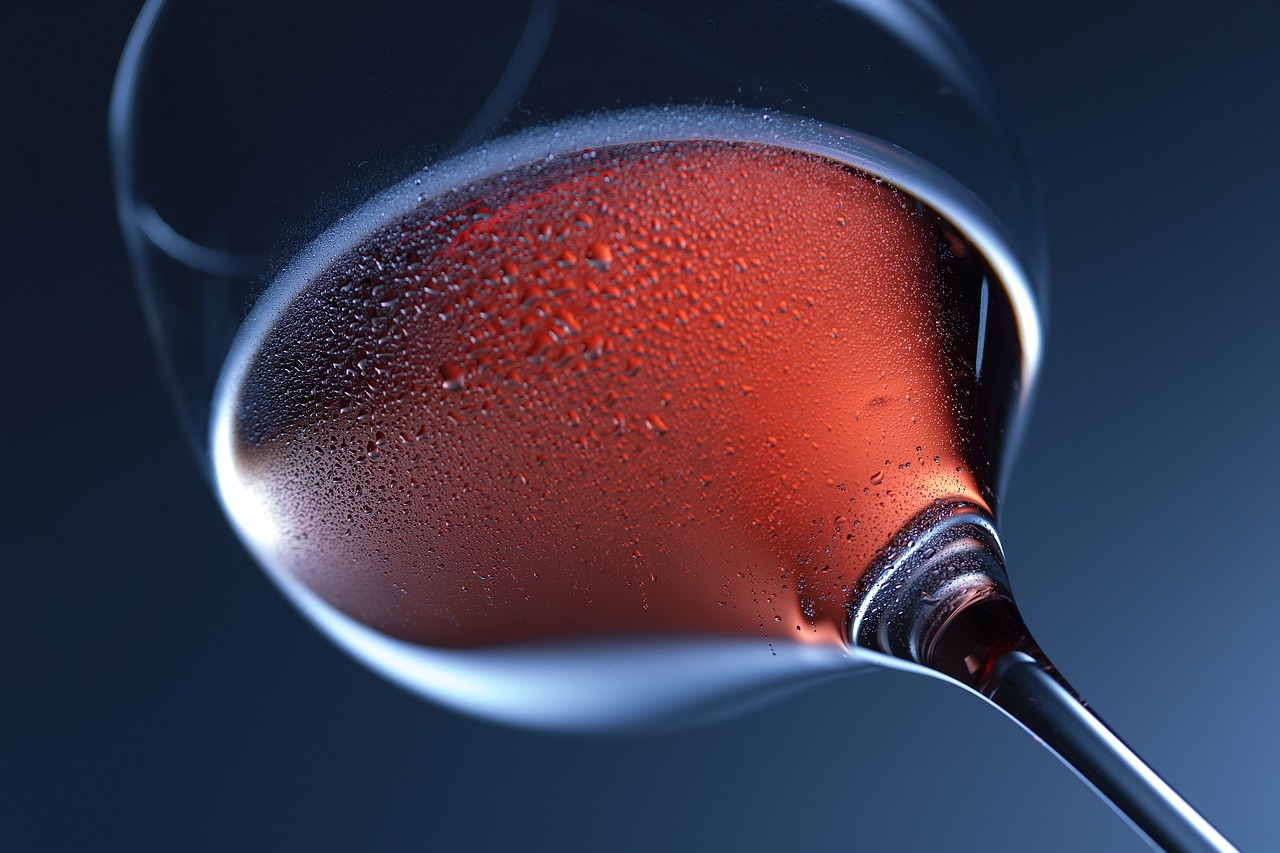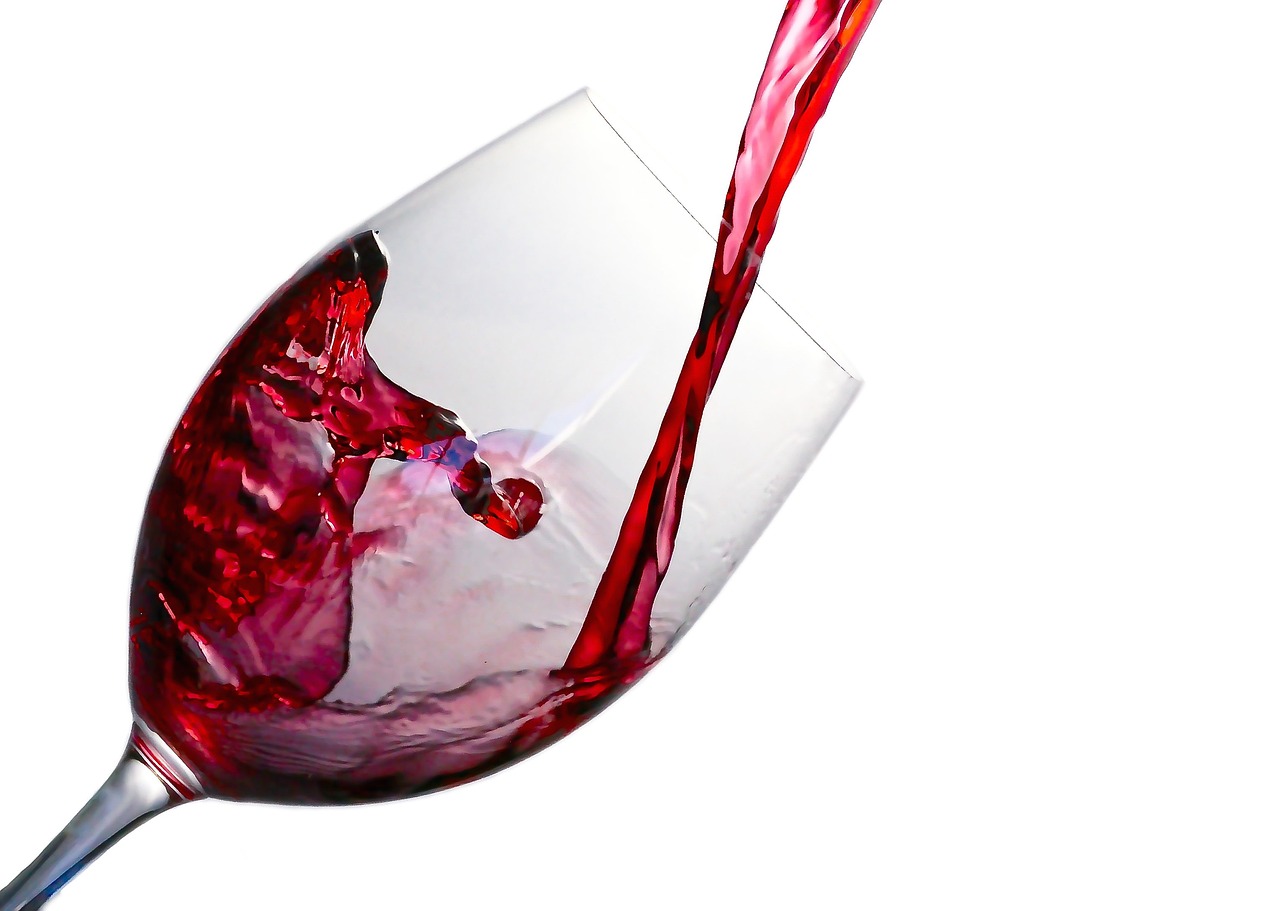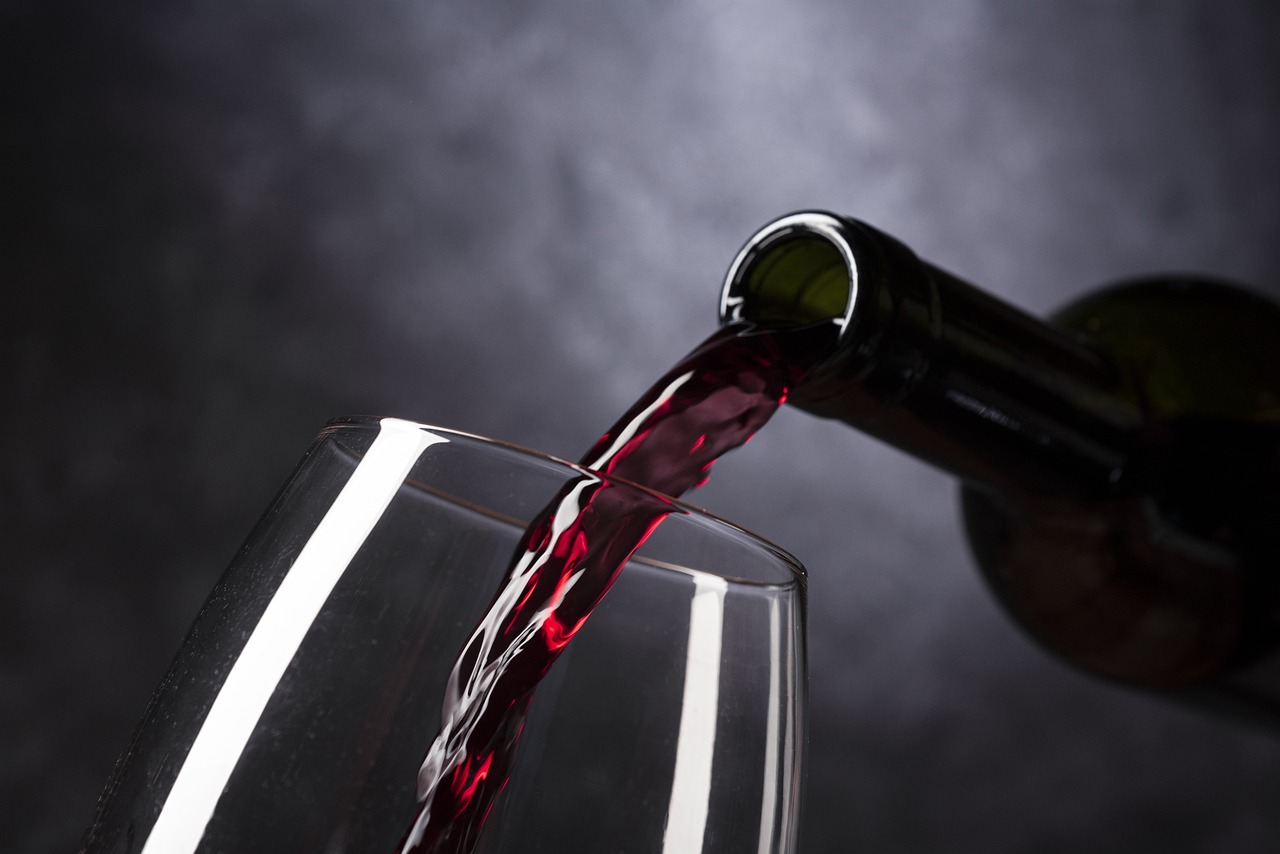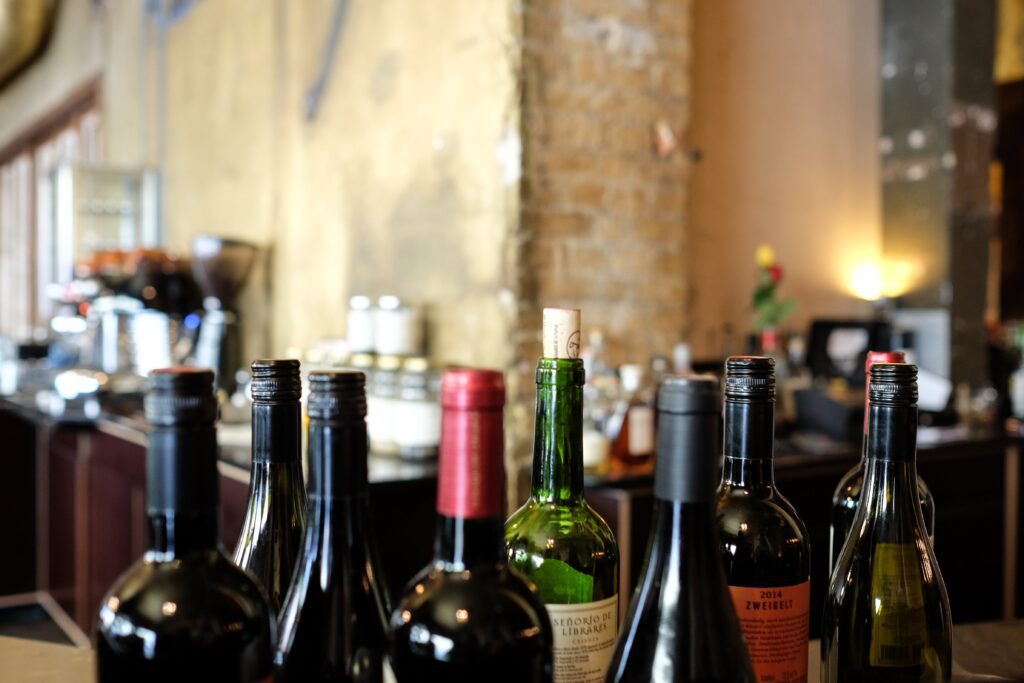Introduction to Flight of Wine
Definition of a Wine Flight
A wine flight refers to a selection of wines that are presented in a row for tasting. This typically involves placing multiple wine glasses with different types or varietals of wine on a tray or a small serving board. The wines are usually served in smaller portions, allowing individuals to sample each wine and compare their flavors, aromas, and characteristics.
A wine flight is often curated around a specific theme, such as wines from a particular region, wines of the same varietal but from different vineyards, or wines of different vintages. The flight is designed to provide a comparative tasting experience, allowing individuals to explore and appreciate the unique qualities of each wine.
Purpose of a Wine Flight
The purpose of a wine flight is multifaceted, offering several benefits to both wine enthusiasts and beginners in the world of wine:
- Exploration and Education: A wine flight provides an opportunity to taste and compare different wines, allowing individuals to expand their knowledge and palate. It offers the chance to discover new varietals, regions, or winemaking styles, enhancing one’s understanding and appreciation of wine.
- Flavor and Aroma Comparison: By tasting multiple wines side by side, a wine flight enables individuals to compare the flavors, aromas, and characteristics of each wine. This helps develop sensory skills and a deeper understanding of the nuances in wine profiles.
- Decision-Making: For those who are undecided about which wine to choose, a wine flight can assist in decision-making. By sampling multiple wines within a flight, individuals can assess their preferences and make informed choices when purchasing or ordering wine.
- Social Experience: Wine flights are often enjoyed with friends or in a social setting, fostering conversation and shared experiences. It allows for discussions about different wines, personal preferences, and recommendations, making the wine tasting experience more enjoyable and interactive.
In conclusion, a wine flight is a curated selection of wines that is served for tasting purposes. It offers the opportunity to explore, learn, and compare different wines, enhancing one’s knowledge and appreciation of the world of wine. Whether you’re a wine enthusiast or a beginner, a wine flight can be a delightful and educational experience.

Types of Wine Flights
Regional Wine Flight
A regional wine flight is a type of wine flight that showcases wine varieties from a specific region. It offers the opportunity to explore and compare wines from a particular area, highlighting the unique characteristics and flavors of that region’s wines. This type of wine flight can be an excellent way to learn about different wine-growing regions and to appreciate the influence of terroir on the final product.
Varietal Wine Flight
A varietal wine flight focuses on wines made from the same grape variety but sourced from different vineyards or regions. It allows individuals to explore and compare the nuances of wines made from the same grape but influenced by different growing conditions and winemaking techniques. This type of wine flight is particularly useful for those interested in understanding how different terroirs and winemaking styles can impact the final product.
In summary, wine flights offer an immersive and educational tasting experience, allowing individuals to explore and compare different wines. Whether it’s a regional wine flight that highlights wines from a specific area or a varietal wine flight that focuses on different expressions of the same grape, these tasting experiences provide opportunities for learning, discovery, and enjoyment. So next time you have the chance, consider trying a wine flight to expand your wine knowledge and enhance your tasting experience. Cheers!

Creating a Wine Flight
Selecting wines for the flight
When creating a wine flight, it’s important to carefully select the wines that will be featured. Here are a few tips for choosing the wines for your flight:
- Consider a theme: Before you start selecting wines, think about the theme or concept for your flight. It could be based on a particular region, grape variety, or winemaking technique. Having a clear theme will help guide your wine selection process.
- Variety is key: Aim to include a variety of wines in your flight. This can include different styles, vintages, or even variations within a single grape variety. Offering diversity in the wines will provide a more dynamic tasting experience.
- Highlight differences: Look for wines that showcase different characteristics or flavor profiles. This could involve selecting wines from different regions known for producing the same grape variety or comparing wines made with different aging or fermentation methods.
Organizing the wine flight
Once you have selected the wines for your flight, it’s time to organize them in a way that maximizes the tasting experience for your guests. Here are some suggestions:
- Start with lighter wines: Begin the flight with lighter-bodied wines and gradually progress to fuller-bodied ones. This progression allows participants to appreciate the subtle nuances and builds their palate intensity.
- Offer complementary pairings: Consider providing small food pairings with each wine to enhance the tasting experience. These pairings can highlight the flavors and aromas of the wines and provide a basis for further discussion.
- Provide tasting notes: Include tasting notes with each wine to provide guests with information about the wine’s origin, flavor profile, and other relevant details. These notes can serve as a helpful guide during the tasting and encourage conversation among participants.
By following these guidelines, you can create a wine flight that not only educates and engages your guests but also leaves them with a memorable experience. Wine flights offer a wonderful opportunity to explore and appreciate the intricacies of different wines while expanding your knowledge and palate. So, why not give it a try and elevate your wine tasting experience?

Creating a Wine Flight
Selecting wines for the flight
Tips for Crafting a Wine Flight:
When assembling a wine flight, the careful selection of featured wines is crucial. Here are a few tips to guide you:
- Consider a Theme: Before choosing wines, define a theme or concept for your flight. This could revolve around a specific region, grape variety, or winemaking technique. A clear theme will serve as a guide for your wine selection process.
- Variety is Key: Aim for diversity in your flight by including different styles, vintages, or variations within a single grape variety. Providing a range of wines ensures a more dynamic and engaging tasting experience.
- Highlight Differences: Seek out wines that showcase distinct characteristics or flavor profiles. This might involve selecting wines from different regions known for producing the same grape variety or comparing wines made with different aging or fermentation methods.
Organizing the wine flight
Organizing Your Wine Flight for an Enhanced Tasting Experience:
After selecting the wines for your flight, the next step is to arrange them in a way that optimizes the tasting experience for your guests. Here are some suggestions:
- Start with Lighter Wines: Initiate the flight with lighter-bodied wines and progress gradually to fuller-bodied ones. This sequencing allows participants to discern subtle nuances and progressively intensifies their palate.
- Offer Complementary Pairings: Enhance the tasting experience by providing small food pairings with each wine. These pairings can accentuate the flavors and aromas of the wines, creating a sensory journey and serving as a basis for further discussion.
- Provide Tasting Notes: Include tasting notes with each wine, offering guests information about the wine’s origin, flavor profile, and other pertinent details. These notes act as a helpful guide during the tasting, encouraging conversation and enriching the overall experience.
By following these guidelines, you can create a wine flight that not only educates and engages your guests but also leaves them with a memorable experience. Wine flights offer a wonderful opportunity to explore and appreciate the intricacies of different wines while expanding your knowledge and palate. So, why not give it a try and elevate your wine tasting experience?
Wine Flight Ideas
Red wine flight
– Featuring a variety of red wines including merlots and cabernets.- Guests will be surprised by the difference in flavors, from hints of berries to strong notes of smokey woody flavors.
White wine flight
– Go in the opposite direction with a flight of white wines.- Explore the range of flavors and profiles found in white wines, from crisp and refreshing to creamy and full-bodied.
Remember, whether you are hosting a virtual wine tasting or enjoying a wine flight with friends and family, the key is to have fun and explore the world of wine. Cheers!

Wine Flight Presentation
Wine flight boards and glasses
Presenting Your Wine Flight: Considerations for Boards and Glasses:
When showcasing a wine flight, the choice of wine flight boards and glasses plays a crucial role. Here are some considerations for the presentation:
- Wine Flight Boards: Wine flight boards are designed to hold wine glasses in a row, facilitating easy comparison of different wines. These boards come in various materials, such as wood or acrylic, and can accommodate different numbers of glasses. Select a board that matches the size and quantity of glasses in your flight.
- Wine Glasses: Using the right glasses is essential for a wine flight presentation. Ensure the glasses are clean and devoid of strong aromas or residues that might impact the perception of the wines. Opt for clear, stemware glasses ideally, allowing tasters to fully appreciate the color and aromas of each wine.
Proper serving techniques
Enhancing the Tasting Experience: Serving Techniques for Your Wine Flight:
The presentation of wines in a flight can significantly influence the tasting experience. Consider the following serving techniques:
- Temperature: Serve wines at the appropriate temperature, tailored to the type of wine. Typically, red wines are served at room temperature or slightly cooler, while white wines and rosés are served chilled. Adhering to recommended serving temperatures ensures optimal enjoyment.
- Pouring Order: The order in which wines are poured can impact the tasting experience. Commence with lighter-bodied wines and progress to fuller-bodied ones. This sequencing allows participants to appreciate the nuances of each wine and prevents more intense varieties from overpowering the palate.
- Quantity: Pour smaller quantities of wine for each tasting in the flight. This approach enables tasters to evaluate and compare wines without being overwhelmed by alcohol content. It also ensures there is enough wine for sampling throughout the flight.
Taking care to use the right wine flight boards and glasses, as well as following proper serving techniques, can enhance the overall wine tasting experience and facilitate meaningful discussions about the wines. Remember, presentation matters when it comes to wine flights, so pay attention to the details and create a visually pleasing and engaging experience for your guests.

Tasting and Evaluating a Wine Flight
Wine tasting techniques
When participating in a wine flight, it is important to use proper tasting techniques to fully evaluate and appreciate the wines. Here are some techniques to follow:
- Seeing: Start by examining the color and clarity of the wines. Hold the glass against a white background to observe the intensity and hue. This can provide insights into the wine’s age and grape variety.
- Swirling: Gently swirl the wine in the glass to release the aromas. This helps to oxygenate the wine and intensify its bouquet.
- Smelling: Bring the glass to your nose and take a moment to inhale the aromas. Try to identify different scents, such as fruits, spices, or floral notes. Take note of any complexities or nuances in the wine’s aroma.
- Tasting: Take a small sip of the wine and allow it to coat your palate. Pay attention to the flavors and the way they evolve. Note the level of acidity, sweetness, and tannins. Consider the wine’s structure, texture, and balance.
Evaluating the wines in a flight
When evaluating wines in a flight, it is helpful to establish a system for comparison. Here are some factors to consider:
- Aroma: Assess the intensity, complexity, and quality of the aromas. Note any differences or similarities between the wines.
- Taste: Consider the flavors and how they interact with each other. Evaluate the wine’s acidity, sweetness, and tannins. Look for balance and harmony.
- Structure: Evaluate the wine’s body, alcohol level, and overall mouthfeel. Consider the length of the finish and any lingering flavors.
- Overall impression: Compare the wines and determine your overall impression of each. Consider factors such as complexity, aging potential, and personal preference.
By using these tasting techniques and carefully evaluating each wine in a flight, you can gain a deeper understanding of the different characteristics and nuances of each wine. This allows for a more objective assessment and fosters meaningful discussions among tasters. Remember to take notes of your observations and share your experiences with others in the wine community.
Tasting and Evaluating a Wine Flight
Wine tasting techniques
When participating in a wine flight, it is important to use proper tasting techniques to fully evaluate and appreciate the wines. Here are some techniques to follow:
- Seeing: Start by examining the color and clarity of the wines. Hold the glass against a white background to observe the intensity and hue. This can provide insights into the wine’s age and grape variety.
- Swirling: Gently swirl the wine in the glass to release the aromas. This helps to oxygenate the wine and intensify its bouquet.
- Smelling: Bring the glass to your nose and take a moment to inhale the aromas. Try to identify different scents, such as fruits, spices, or floral notes. Take note of any complexities or nuances in the wine’s aroma.
- Tasting: Take a small sip of the wine and allow it to coat your palate. Pay attention to the flavors and the way they evolve. Note the level of acidity, sweetness, and tannins. Consider the wine’s structure, texture, and balance.
Evaluating the wines in a flight
When evaluating wines in a flight, it is helpful to establish a system for comparison. Here are some factors to consider:
- Aroma: Assess the intensity, complexity, and quality of the aromas. Note any differences or similarities between the wines.
- Taste: Consider the flavors and how they interact with each other. Evaluate the wine’s acidity, sweetness, and tannins. Look for balance and harmony.
- Structure: Evaluate the wine’s body, alcohol level, and overall mouthfeel. Consider the length of the finish and any lingering flavors.
- Overall impression: Compare the wines and determine your overall impression of each. Consider factors such as complexity, aging potential, and personal preference.
By using these tasting techniques and carefully evaluating each wine in a flight, one can gain a deeper understanding of the different characteristics and nuances of each wine. This allows for a more objective assessment and fosters meaningful discussions among tasters. It is recommended to take notes of observations and share experiences with others in the wine community.
Pairing Food with a Wine Flight
Principles of food and wine pairing
Pairing food with a wine flight can enhance the tasting experience and create harmonious flavor combinations. Here are some principles to consider when pairing food with wine:
- Balance: Aim for a balance between the flavors of the food and the wine. The wine should complement and elevate the flavors of the dish.
- Similarity: Look for similarities in flavor profiles between the wine and the food. For example, a rich, buttery Chardonnay can pair well with buttery seafood dishes.
- Contrast: Consider contrasting flavors to create interesting taste sensations. For instance, a crisp, acidic Sauvignon Blanc can cut through the richness of creamy cheese.
- Weight: Match the weight of the wine with the weight of the food. Light wines generally pair well with lighter dishes, while fuller-bodied wines can handle heartier flavors.
Recommended food pairings for wine flights
Here are some recommended food pairings for different wine flights:
| Wine Flight | Recommended Food Pairings |
|---|---|
| Red wine flight: Pinot Noir, Cabernet Sauvignon, Syrah/Shiraz | Grilled steak, lamb chops, aged cheeses |
| White wine flight: Chardonnay, Sauvignon Blanc, Riesling | Grilled fish, chicken, goat cheese |
| Sparkling wine flight: Champagne, Prosecco, Cava | Oysters, sushi, fresh fruits |
| Rosé wine flight: Rosé of Pinot Noir, Grenache, Syrah | Salads, charcuterie, grilled vegetables |
These are just a few examples of food pairings for wine flights. Feel free to experiment and explore different combinations to find your own favorites. Remember, the goal is to enhance the flavors and create a memorable tasting experience.

Benefits of a Wine Flight
Exploring different wine styles
By participating in a wine flight, individuals have the opportunity to explore and compare different wine styles in a single sitting. This allows them to taste and analyze the nuances and characteristics of each wine side by side, providing a deeper understanding of the diverse range of flavors, aromas, and structures that different wine styles offer.
Expanding wine knowledge and palate
A wine flight offers a unique educational experience by allowing participants to expand their wine knowledge and palate. By tasting a variety of wines and comparing them, individuals can develop their ability to identify and appreciate different aromas, flavors, and textures. This helps to enhance their wine tasting skills and allows them to confidently discuss and evaluate wines with others in the wine community.
When evaluating wines in a flight, it is important to use proper tasting techniques to fully evaluate and appreciate the wines. Some techniques to follow include:
- Seeing: Start by examining the color and clarity of the wines. Hold the glass against a white background to observe the intensity and hue.
- Swirling: Gently swirl the wine in the glass to release the aromas.
- Smelling: Bring the glass to your nose and inhale the aromas, trying to identify different scents.
- Tasting: Take a small sip of the wine and pay attention to the flavors and the way they evolve.
By carefully evaluating each wine in a flight, one can gain a deeper understanding of the different characteristics and nuances of each wine. This allows for a more objective assessment and fosters meaningful discussions among wine tasters. It is recommended to take notes of observations and share experiences with others in the wine community.
Pairing food with a wine flight can enhance the tasting experience and create harmonious flavor combinations. Some principles to consider when pairing food with wine include aiming for balance, looking for similarities or contrasts in flavor profiles, and matching the weight of the wine with the weight of the food. For example, a red wine flight consisting of Pinot Noir, Cabernet Sauvignon, and Syrah can be paired with grilled steak, lamb chops, and aged cheeses.
In conclusion, participating in a wine flight offers several benefits, including the opportunity to explore different wine styles, expand wine knowledge, and improve tasting skills. By following proper tasting techniques and considering food pairings, individuals can have a rewarding and educational wine flight experience.

Conclusion
Recap of the importance and enjoyment of wine flights
The wine flight experience allows individuals to explore and compare different wine styles in a single sitting, providing a deeper understanding of the diverse range of flavors, aromas, and structures that wines offer. By expanding their wine knowledge and palate, participants can confidently discuss and evaluate wines with others. Careful evaluation of each wine using proper tasting techniques leads to a more objective assessment and fosters meaningful discussions among wine tasters. Pairing food with a wine flight enhances the tasting experience and creates harmonious flavor combinations.
Final thoughts and recommendations
Participating in a wine flight is a fun and educational way to embark on a wine journey and gain an appreciation for different types of wine. Whether you are a wine enthusiast or a beginner, the benefits of a wine flight are significant. To make the most out of your wine flight experience, consider the following recommendations:
- Experiment with different wine styles and expand your wine knowledge by trying flights focused on different varieties, regions, or vintages.
- Take notes and share your experiences with others in the wine community to enhance learning and discover new perspectives.
- Use proper tasting techniques to fully evaluate and appreciate the wines in your flight.
- Consider pairing food with your wine flight to enhance the tasting experience and create enjoyable flavor combinations.
Remember, the world of wine is vast and full of possibilities. So, why not embark on a wine flight adventure and let your taste buds soar? Discover new flavors, explore different styles, and develop your wine appreciation through the exciting world of wine flights. Cheers to your wine journey!

Flight of Wine: Sampling a Variety of Wines with a Flight
FAQ
Q: What is a flight of wine?
A: A flight of wine is a curated selection of multiple small pours of different wines. It offers the opportunity to sample a variety of wines side by side, allowing you to experience and compare different flavors, aromas, and characteristics in a single setting.
Q: How does a flight of wine work?
A: In a flight of wine, you typically receive several glasses, each containing a different type or varietal of wine. These glasses are presented in a specific order, usually progressing from lighter to bolder wines. This allows you to appreciate the subtle nuances of each wine while also providing a cohesive tasting experience.
Q: How many wines are typically included in a flight?
A: The number of wines in a flight can vary, but it usually consists of three to five different wines. This range is often preferred as it offers enough variety to explore different flavors without overwhelming the palate.
Q: Can I choose the wines in my flight?
A: The selection of wines in a flight is typically pre-determined by the establishment offering the flight. These selections are carefully chosen to provide a well-rounded tasting experience and highlight the diversity of a particular region, varietal, or theme. You can always inquire about the wines included if you have any dietary restrictions or preferences.
Q: What are the advantages of trying a flight of wine?
A: Trying a flight of wine has several advantages. It allows you to sample a range of wines without committing to full glasses, enabling you to explore new flavors and expand your palate. Flights can also help you understand the differences between wines and develop your preferences by comparing and contrasting them side by side.
Q: How do I taste wines in a flight?
A: When tasting wines in a flight, it’s best to start with the lightest wine and gradually progress to the full-bodied ones. Take your time to smell the aromas, swirl the wine in the glass to release its flavors, and then take small sips. Pay attention to the taste, texture, acidity, tannins, and finish of each wine, and take notes if desired.
Q: Can I share a flight of wine with others?
A: Sharing a flight of wine can be a great way to explore different wines with friends or family. However, it’s essential to remember that each person’s experience of taste and preference may vary. Additionally, ensure to have a designated driver or plan alternative transportation if you plan on consuming alcohol.
Q: Are flights of wine available at every wine bar or restaurant?
A: Flights of wine are becoming increasingly popular, and many wine bars and restaurants offer them as a way to showcase their selection and provide a unique tasting experience. However, availability can vary, so it’s advisable to check with the establishment beforehand or inquire if they offer flights.
Q: Is a flight of wine more expensive than ordering individual glasses?
A: Flights of wine are usually priced competitively and offer good value for money when compared to ordering individual glasses. By choosing a flight, you get to sample multiple wines at a more affordable price than purchasing full glasses of each wine separately. Price may vary depending on the quality and rarity of the wines in the flight.
Q: Can I order a flight of wine to accompany a meal?
A: While wine flights are often enjoyed as a standalone tasting experience, they can also be paired with a meal. Some establishments offer food pairings specifically designed to enhance the flavors of each wine in the flight. Feel free to inquire with the staff or sommelier for their recommended pairings.
In summary, a flight of wine provides a unique opportunity to sample a variety of wines, allowing you to explore different flavors, aromas, and characteristics all at once. It’s a fantastic way to expand your wine knowledge, discover new favorites, and appreciate the diversity of the vast world of wines. Remember to drink responsibly and enjoy the journey!

We are introducing Alberto Wilson, the content owner at South Avenue Bar! 🍹🍻Join us at South Avenue Bar, a modern establishment boasting an impressive cocktail menu and a vibrant atmosphere. For those who prefer a classic brew, we also offer a delightful selection of draft beers, poured just right to ensure a perfect pint every time.
Immerse yourself in the rhythms of Latin music during our weekly Latino night, where you can sip on refreshing margaritas and mojitos while enjoying the vibrant beats. Indulge in our delectable Greek tapas, featuring mouthwatering olives and other delightful small bites that perfectly complement your drink of choice.
Whether you’re seeking an exquisite cocktail experience or a laid-back evening with your favorite beer, South Avenue Bar, under the guidance of Alberto Wilson, promises a memorable and delicious journey through the world of libations. Come and join us today! 🍸🎉
